How to grow good garlic: tips and tricks
Garlic is necessary not only during periods of epidemics, but also to saturate the body with nutrients and vitamins. It can be purchased on the market or grown on the site yourself. To do this, you should initially decide on a variety that will grow successfully, as well as prepare the soil and plant it correctly. Only knowledge of the basic rules will allow you to have a high-quality and good harvest, not affected by diseases and pests.
Content:
- The best varieties of garlic to grow
- Site and soil preparation
- Landing terms and rules
- How to properly care for garlic?
- Diseases and pests of garlic, the fight against them
- Harvesting and storage methods for garlic
- What is garlic good for?
The best varieties of garlic to grow
Garlic is a perennial plant that belongs to the family of the genus Amaryllis. A huge number of varieties of this crop have been bred for cultivation - about 70 pieces. Therefore, if there is a desire to grow a tasty and aromatic root vegetable for yourself, then you can not limit yourself to 1 variety, but try to get other original bulbs.
According to the planting time, garlic varieties are divided into spring and winter varieties.
Such a root crop does not have a central core. All the teeth in the head of the variety are arranged in a spiral. Moreover, the largest ones go first, and to the core they decrease in volume. The type of horticultural culture does not release arrows.
The most popular varieties of plants planted after the winter cold are distinguished:
- Victorio - has an increased amount of harvest, medium maturation. The beams are flat and round, the color of the upper husk is white-yellow.
- Elenovsky - round-shaped bulbs, medium ripening, quite fruitful. The top layer of the flaky skin is white, and the inner part has a pinkish tone.
- Gulliver - brings good harvest, late harvest, releases arrows. The heads are rounded and slightly flattened in the middle. The general color of both splinters and internal content is whitish.
- Sochi 5b - medium late ripening, heads do not differ in structure from most spring species. But the scales can vary in color - from white to purple.
- Ershovsky - the bulbs are round in diameter, but flattened towards the edges. The date is a great harvest.
In the case of winter garlic, its name speaks for itself - it is grown in winter, planting in the last days of autumn or in the first decade of January. Its central part is filled with a rod, around which teeth are placed in a row, all of the same shape. This type of culture has a peculiarity - it releases an arrow on which small onions are placed. The latter can be planted and a fairly large harvest can be obtained.
The following varieties of winter varieties are distinguished:
- Lyubasha - her stem can grow up to 1.2 m, stoically tolerates both dry summers and frosty winters. The bulb is round but flat in shape. The color of the splinters is predominantly white, but there are medium-sized purple veins on the surface.The variety has a bright, rich taste, is favorable for canning for the winter.
- Dobrynya is a fairly productive variety, but not so frost-resistant. The taste of vegetables is mild and goes well for fresh consumption. Ripens late, but has good keeping quality.
- Sofievsky - grows well during frosts, but in the summer months it requires an increased level of sunlight and heat. The maximum height of the arrow does not exceed 70 cm. The upper flaky layer is of a delicate violet tone, in terms of taste it is moderately spicy.
- Alkor - Can be stored for a long period. The upper color of the scales is pinkish, and the internal structure is more of a gray tint. Often, when grown, it is affected by yellow dwarfism.
- Dubkovsky - stored for a long time, brings good harvests. Luchina is not large in weight, only up to 50 grams. The taste is spicy.
Any type of garlic has an increased resistance to diseases and is practically not exposed to pests. This significantly increases the yield and storage duration of the root crop.
Site and soil preparation
Growing any type of garlic is a fairly simple process. In order for the root crop to turn out to be of high quality with solid dense heads, it is recommended to choose the most suitable seedling.
During planting, certain rules should be followed:
- First of all, a garden bed should be prepared for garlic rooting. The best option for planting root crops will be loose, fertile soil with an increased level organic fertilizers... To get large heads, it is necessary to plant plantings in sunny open areas, where there are no strong northerly winds and penetrating drafts.
- To prepare the soil for winter garlic, it should be dug up 2-3 weeks before planting in an open area. This is necessary in order for the soil substrate to settle down safely. If you do not wait for the allotted time, then, together with the nutrient moisture, the cloves will begin to be drawn deeper into the soil. Such a process will negatively affect the quality of the harvested crop and the duration of its preservation.
- For planting in the spring, you must also dig up the soil. The procedure is carried out on a shovel bayonet. After plowing, the soil is leveled, spilled with a manganese solution, if necessary, fed and covered with a film. A kind of greenhouse is necessary to warm up the earth before rooting.
- Nutrients are added if the soil substrate is too depleted. For planting a root crop, the soil must be of a loose consistency, sandy loam type and a neutral pH environment.
When choosing a seat, you must focus on the area of the garden. The terrain should not be less than 75 cm. It is best if the site is slightly elevated above the general ground level. This will prevent excess moisture from stagnating.
Landing dates and rules
In the case of disembarkation garlic should be guided not by the desire and needs of the gardener and not even by the climatic features of the region, but by the planting time of a certain type. This approach to rooting is due to the fact that a root crop planted at the wrong time will simply refuse to grow and die in the ground.
When is it better to plant garlic:
- Spring garlic should be buried in the ground immediately after the last snow has melted and the return frosts have gone. Planting dates vary from region to region, so weather conditions should be followed. In most cases, in the central regions, the date is set for April 10, in the southern cities the disembarkation is made much earlier.
- Winter crops must be planted from mid-September if this is the central part of Russia, until the last days of October. In the south of the country, planting can be carried out in the last days of November - early December.
It is important to take into account the fact that before the first significant decrease in temperature, the cloves must grow the root system. This is necessary for the seedling to winter favorably during the cold season.
Planting of a spring variety is carried out as early as possible, this is necessary so that the ripe crop can fully ripen before the onset of cold days.
At the same time, earlier deepening into the ground in the autumn period can also destroy the entire planned harvest. This is due to the fact that in warm weather, the seedling will not only have time to grow rhizomes, but also release green shoots. The latter will die at the onset of the cold season, which will lead to the loss of the seedling.
In order for the plant to give a good, large harvest, it must be planted correctly. Some features are distinguished for each of the varieties of root crops:
- For winter garlic, the soil should be well shed before planting. If the soil is wet, then the introduction of nutrient moisture is canceled. The seedling is deepened 3 cm into the ground. From above it is recommended to mulch until the first shoots appear with crushed peat.
- For planting in the fall, it is necessary to pour river sand into the grooves prepared in advance before rooting, or wood ash... This is required so that the seedling does not rot in winter.
- Watering is not necessary during planting of seedlings. The clove should be deepened by 5 cm. The larger the planting material, the deeper it should be placed. Such a deepening is required so that the plantings do not freeze out with a strong decrease in temperature.
- After the deepening procedure, the soil is covered with mulch, mainly peat, at a thickness of at least 3 cm. Before winter, fallen leaves or branches of spruce branches should be applied to the planting. When snow falls, it is recommended to lay out a snowdrift of white mass on top. So the seedlings will be protected from freezing.
How to properly care for garlic?
In order for the plant to grow rapidly and gain volume, care recommendations must be followed. Their periodic implementation leads to a rich and large harvest. When growing a plant, you should be guided by the following rules:
- Watering - if the weather is dry and no rain is expected in the coming days, then watering should be applied as needed. The volume of nutrient moisture intake should be taken into account on the basis that root system should be well saturated with moisture. Watering should be completely eliminated 3-4 weeks before harvest. This should be done in order for the head to gain weight and meet the stated standards.
- Top dressing - for winter garlic in the spring, it is recommended to shed the plant with urea. After that, apply top dressing as needed. For spring garlic, top dressing is necessary twice during the growing season: organic fertilizers are applied in early spring, in the middle of summer, watering with an ash solution is carried out.
- It should be borne in mind that garlic is capable of degeneration. Therefore, it is recommended to periodically, once every 3-4 years, land the heads formed on the arrows into the ground. Such a procedure will preserve all varietal qualities and return the heads to their original appearance and volume.
- When the garlic releases arrows, they grow up to 20 cm, they should be broken off or cut with a sharp garden tool to a height of 5 cm.
- During cultivation, loosening and weeding should be completely excluded. Weeds should be removed manually without using sharp implements. This is necessary so as not to accidentally damage the forming head.
Diseases and pests of garlic, the fight against them
Although garlic has an increased resistance to the development of diseases, it can be affected, like all vegetable crops, by fungal, infectious and viral diseases. To combat the developed disease, it is not recommended to use chemical preparations for the root crop. A vegetable absorbs all possible negative substances, which leads to the impossibility of eating it.It is best to use biofungicides. They do not cause significant harm to the plant and after processing the plant with them, the root crop can be eaten.
If, when spots or changes in the color of the leaf plate are detected on the bush, and the arrows slowed down, then there is a possibility that the plant is infected with a disease. Most often, garlic is exposed to rust on the leaf, damage powdery mildew, Fusarium, and rot forms on the rhizomes and the formation of white rot on the bottom.
If you find any symptoms of malaise, you should carefully approach the issue of combating the disease.
It is required to start treating the soil substrate and plants with Fitosporin, Alirin, Glyokladin, Gamair or Planriz. Dilution of the drug should be carried out strictly with the recommendations on the packaging, it is prohibited to deviate from the rules.
Also, harmful insects can attack the plant. Most often, onion hoverflies, thrips, fly larvae, which are able to independently absorb almost the entire head of garlic, as well as lurkers and nematodes, are found on the bush.
To prevent the invasion, it is necessary to cultivate the land and planting material with bioinsecticides before planting. These drugs contain only a natural biological basis, which does not harm either a person or a vegetable. Avertin-N, Aktofit, Lepidotsid, Nemabakt, Mycoafidin, Bicol, Bitoxibacillin, Penilomycin are used as bioinsecticides. As a preventive measure, it is recommended to plant marigold and calendula along the edge of the landings. The scent of these plants will ward off and scare off most parasites.
Harvesting and storage methods for garlic
To properly harvest the crop, you should wait until the plant has dried out - of all tops. Winter garlic can be harvested from the garden in late July.
But the spring one needs to wait until the end of August or the first days of September. In any case, you need to wait until the lower foliage turns yellow, only then dig it out of the ground:
- To check the quality of the crop and its ripeness, dig up 2-3 heads and taste them and their density. Each tooth should be solid in structure, and the splinters should be well formed.
- Digging of landings is carried out with a pitchfork. To do this, a clod of earth is pushed on and uprooted from the ground. The dug out bulbs, along with the tops, are spread around the perimeter of the garden bed and left to dry for several hours.
- It is not worth cutting off the foliage right away, it still has nutrients, which gradually flow into a torch. Therefore, for high-quality drying, the plants are collected in bunches and placed under a canopy or in a well-ventilated room. After drying, the tops are cut off.
- Experienced gardeners recommend removing garlic from the soil earlier. This is due to the fact that the immature heads will gradually reach, and the fully ripe and overripe splinters will crumble even in the soil, where it will be difficult to collect them. At the same time, their shelf life is reduced.
Garlic is stored at a temperature of +16 .. + 20 C, in rooms where there is good ventilation. The air humidity in such a room or warehouse should not exceed 90%. An excessively dry climate is also not favorable for plants, therefore, the minimum humidity limit is 60%.
What is garlic good for?
Garlic has always been considered a very useful vegetable. It has a positive effect on colds, increasing the protective function of the body, and also saturates the body with various vitamins and microelements.
The following positive qualities of the root crop are distinguished:
- The vegetable strengthens the immune system, making it possible to avoid the development of SARS and influenza.
- The vegetable contains bactericidal components that allow you to quickly neutralize pathogenic microorganisms and bacteria that inhabit the oral cavity, which leads to the fastest recovery.
- The root vegetable has the ability to break down plaques of cholesterol formed in the blood and remove them from the body.
- Garlic liquefies lymph, normalizes blood circulation in the vessels.
- The nutrients and vitamins inside can eliminate stress, relieve irritation, and normalize a person's sleep.
- Recommended for diabetics, due to the fact that it normalizes blood sugar levels.
- Strong-smelling teeth have a beneficial effect on the elimination of poisons and toxins from the internal organs.
- Helps in the fight against helminthic invasion.
This list of the health benefits of garlic is not complete. It has a positive effect on patients suffering from surges in blood pressure, as well as patients with cardiovascular diseases. Therefore, it is so important to grow the plant with full knowledge of its natural growth rather than buying from the market.
So grow garlic not difficult. For its rooting, you should pick up the soil and prepare. It is imperative to plant on time and take care of the seedlings according to the rules. Closely monitor the condition of the plant to prevent any occurrence of parasites or diseases. Only in this case is it possible to get a high-quality and good harvest.
More information can be found in the video:





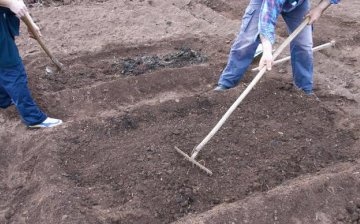

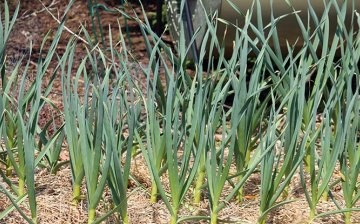

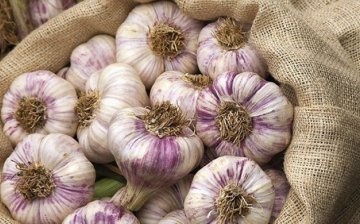
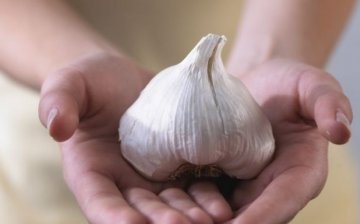









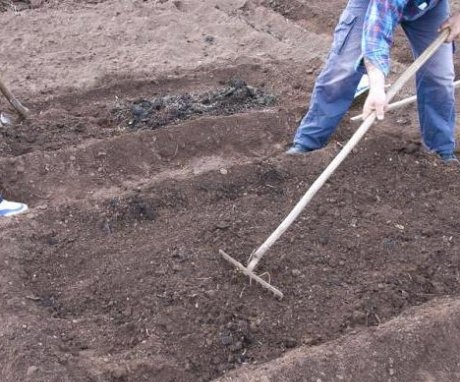
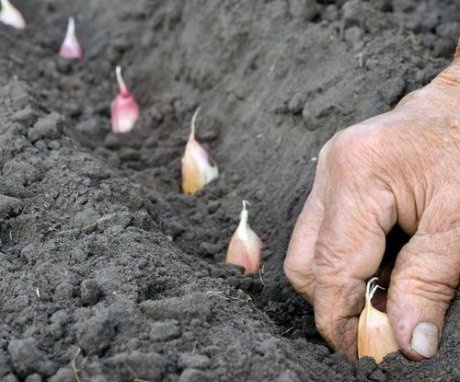
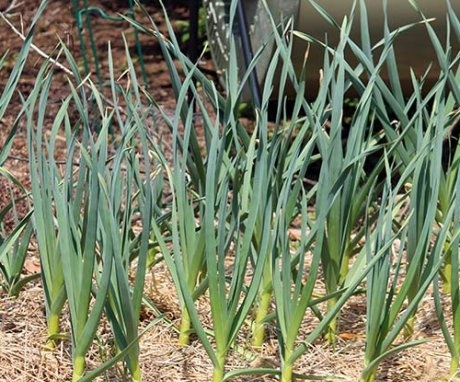

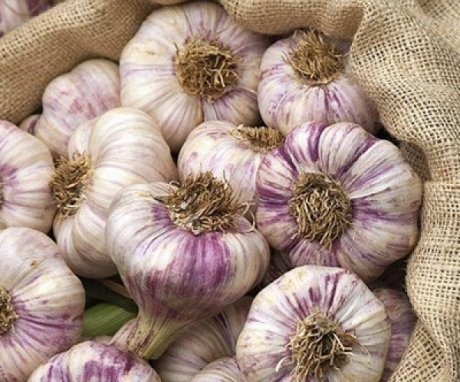
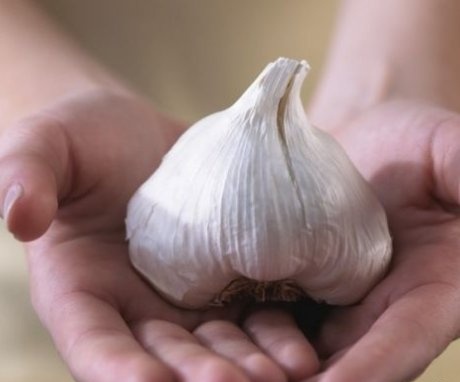
We grow garlic every year, we harvest a good harvest, so we don't buy for the winter and for conservation, our own is enough, it even remains for planting. I try to change the varieties periodically, but of course I select those that grow well in our strip.
Where without garlic, I grow, of course. I tried to plant both in the spring and in the fall. I stopped at the winter crop, somehow it grows better in my conditions, and the fruits are larger, and does not get sick. The only thing is that I often miss the date of collection, the heads are falling apart. And so until the new harvest is enough, I also distribute it.
I only plant winter garlic. The fact that he is ripe, I judge by the bulb on the arrow. Especially I leave one arrow, cut off and eat the rest. I try to sit down before the temperature drops so that I do not have time to rise.